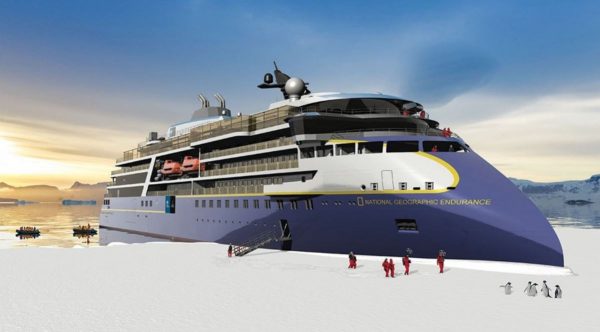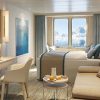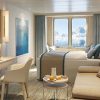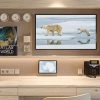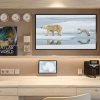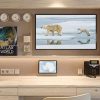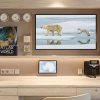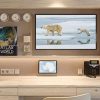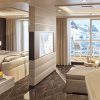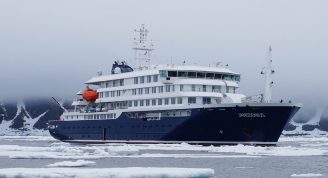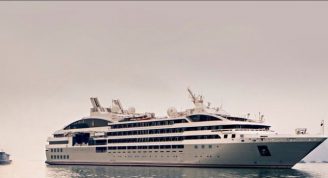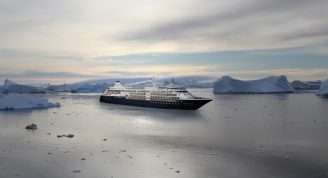Description
Discover Southern Patagonia’s fjords, icebergs, and wildlife
Long before humans arrived on the continent, glaciers carved the landscapes of Southern Patagonia and the Chilean fjords. Now it’s a place for the grandest nature adventures: marveling at calving glaciers, whale and dolphin watching, hiking through rugged landscapes, Zodiac cruising among icebergs, and observing penguins by the thousands. Explore iconic Torres del Paine, where guanacos roam the vast steppe. Discover private reserves such as Karukinka; visit the newest marine reserve on the Chilean coast; take in the view of Cape Horn; and enjoy special access to Argentina’s extraordinary Isla de los Estados (Staten Island). On hiking, kayaking, and Zodiac excursions, take in the natural treasures of a wilderness at the edge of the world.
Go by ship to explore Patagonia’s most inaccessible places
Cut by fjords, framed by sheer cliffs, and crossed with towering mountains, Southern Patagonia is largely inaccessible. Going by expedition ship is the only way to experience its myriad wild landscapes in comfort. Explore from massive and more temperate forests in the north to fjords and icescapes further south. You’ll visit one of Patagonia’s newest and largest protected areas: Karukinka Natural Park. We’re thrilled to have special permission to visit this reserve, which spans 1,160 square miles and harbors endangered culpeo fox and Andean condors.
Spend two days in spectacular ‘Glacier Alley’
Sail into fjords cut through granite walls with cascading waterfalls and dotted with isles covered in verdant flora. This UNESCO Biosphere Reserve this area is home to three unique and beautiful glaciers we’ll explore. Venture into secluded Seno Pia and see its impressive glacier; explore dramatic Seno Garibaldi and its stunning wall of ice; and see Seno Agostini, the source of numerous glaciers originating more than 6,600 feet above sea level.
Explore the coast’s largest marine park
Venture into the fast-moving, nutrient-rich channels of Francisco Coloane Marine Park where humpback whales congregate. Explore this protected region in search of black and white Peale’s dolphins, South American sea lions, and the endemic and endangered Chilean dolphin. Plus, spot Andean condors and giant Antarctic petrels that come to feed on the abundant life.
By special permission explore Isla de los Estados
When we visited Isla de los Estados on a pioneering expedition in 2015, we were stunned by what we encountered. This island, almost entirely untouched by humans for hundreds of years, had grown over with wildness. Its beech forests stretched across the land, kelp piled at the shores—all giving way to perfect habitat for penguins and waterbirds, which took to the area in vast numbers. Since then, we’ve returned each year to explore it, and call at the re-creation of the 1884 San Juan de Salvamento “lighthouse at the end of the world,” which inspired Jules Verne’s novel by the same name. Plus, conditions permitting, explore a very rarely seen archeological site where native people lived 1,500 years ago.
See the undersea, too
In the remote areas we venture, the undersea has never before been explored. National Geographic Endurance sails with an undersea specialist capable of deploying an ROV up to depths of 1,000 feet. We’ll shoot video of these benthic regions and then view them on the monitors in the lounge to find what lies beneath the sea in these remote areas. Expeditions in the past have even found species previously unknown to scientists.
Each day is active and engaging
You’ll get out on adventures often in Patagonia—to walk or hike, kayak, or Zodiac cruise through the fjords and alongside towering glaciers. Because of our fleet of both Zodiacs and kayaks, the entire expedition community can embark at once on forays, no waiting around for returning parties. You’ll have a choice of activities each day, and the option to join any naturalist whose interests mirror yours. Choice also includes opting to enjoy the view from the observation lounge, the library, or the bridge. To visit the fitness center with its panoramic windows, or ease into the sauna, or have a massage in the wellness center.
Take advantage of superb photo ops
You’ll have a National Geographic photographer as your traveling companion, to inspire you and provide tips in the field. And the services of a Lindblad Expeditions-National Geographic certified photo instructor, as well—to help you turn your point-and-shoot camera into an aim & create. You’ll find no end of subjects, and the help you need to return home with your best photos ever.
Travel with a top team
Explore under the sure guidance of an expedition leader, an assistant expedition leader, eight veteran naturalists, a National Geographic photographer plus a Lindblad-National Geographic certified photo instructor, an undersea specialist,a wellness specialist, and a video chronicler. Their knowledge and passion for Patagonia is the key to your once-in-a-lifetime experience.


